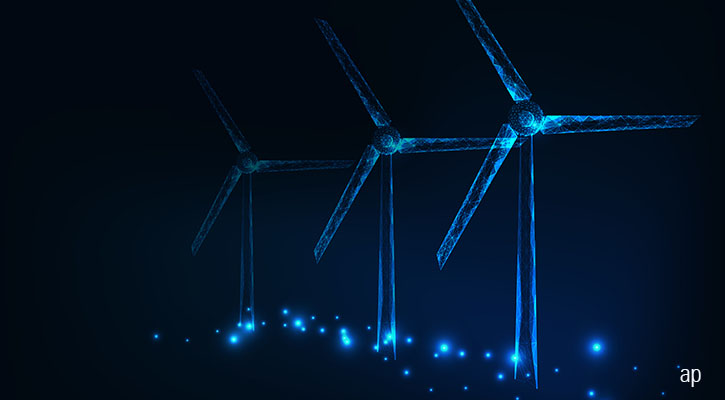
Climate change is rocking the foundations of our world. Extreme weather events are changing the way we think about investing and are making us reflect on how to make the world a cleaner place for the next generation.
“It’s happening today, not 20 years from now,” says Jennifer Wu, head of sustainable Investing at JPMorgan. “But it’s not all bad news. These challenges can bring unique opportunities for us to rebuild our economy in a more sustainable way.”
Indeed every sector will go through some transformation as results of new policy and regulation – and investors should factor that into their asset allocation. “The EU green deal and the carbon border tax will inevitably impact the cash flow and supply chain of many global businesses,” says Wu.
Clear Winners
The clear winners on a sector level are likely to be renewable energy, electric vehicles, infrastructure, and energy efficient buildings, experts say.
In this space, Alex Rowe, manager of Nomura Global Sustainable Equity, likes the US largest renewable energy generator, NextEra Energy (NEE), which has a 19.2 GW renewable capacity - saving 28 m tonnes of CO2 emissions annually. “The company has huge scale, experience and reputational advantages over peers” he says.
Meanwhile, David Harrison, manager of Rathbone Global Sustainability, likes in particular the wind turbine makers because wind energy is already at the same (or better) economic cost versus carbon intensive assets in a number countries.
He has owned the Danish turbine maker Vestas Wind Systems (VWS) for some time. “It has a strong track record in the industry and enjoys a durable economic moat around its business.” He likes that the company has a strong focus on selling maintenance services to its customers, as well as the turbines themselves, which generates recurring cashflow. “This is somewhat of a differentiator in the industry,” he says.
Meanwhile, in the US market, Rowe owns Hannon Armstrong (HASI), a company that invests in and provides financing for low carbon and carbon free projects. “They have exposure to wind, like Vestas, but also solar where we see significant opportunity. Hannon also focuses on providing financing for energy efficiency projects in commercial buildings, which we think has scope to be a much bigger business in the next five years,” he says.
Don’t Overlook the Big Companies
Also the positive climate impact of the largest companies in the world taking action, both directly through their own emissions and indirectly through pressuring suppliers and setting standards for peers, cannot be overlooked.
George Crowdy, a fund manager at Royal London, likes Microsoft (MSFT) because “its tools enable creativity, help drive small business productivity, large business competitiveness and public-sector efficiency,” he explains.” Indeed, Microsoft is a leader in low carbon computing, announcing last January a plan to be carbon negative by 2030 and by 2050 to have removed all of the carbon the company has emitted since its founding in 1975.
“Cloud computing offers significant environmental benefits vs on-premise as compute power is centralised in large data centres which are increasingly located next to sources of renewable energy,” says Crowdy.
Meanwhile, as well as Microsoft, Rowe likes Google parent company Alphabet (GOOGL), which has secured a massive 5.5GW of private renewable capacity making it the largest corporate buyer of renewable Power Purchase Agreements (PPAs) globally and Apple, which has the greatest climate impact in its supply chain, has committed to ensuring that this enormous supply chain is carbon neutral by 2030.
Don’t Screen out the “Bad"
However, this does not mean that all oil and gas company are "bad". Wu, for example, doesn’t screen out all companies belonging to the oil and gas sector, but she looks for the ones who are adopting clean energy and changing their business models.
To evaluate these, she looks at the production and management of emissions, and whether companies are investing in technologies and are managing their consumption of natural capital – meaning electricity, water and waste. “It’s not enough to look how much carbon a company emits, but investors need to understand what plans they have in place to manage to reduce their emission. How to they compare to peers? Is there real commitment behind the plans?”
Guillaume Mascotto, head of ESG for American Century Investments, likes Denmark-based company Orsted (ORSTED), because it has successfully made the transition from being one of the most fossil fuel intensive energy companies a decade ago to being a leading green energy company today. “Once an oil and gas company, Orsted discontinued its dirty assets in 2017 to focus on renewable offshore wind energy,” he says. He also likes the company benefits from government “push policies” including the May 2020 announcement by Denmark of the world’s most ambitious offshore wind project as part of a new climate package aiming to cut the country’s emissions by 70% within a decade.
The bottom line here is there are many ways to invest in companies battling climate change, and investors have different ways to go to do that. But one thing is important, says Wu, “to make an impact on the world, investors need to stay invested and engaged. This is the key driver to make a change.











:quality(80)/cloudfront-us-east-1.images.arcpublishing.com/morningstar/6BCTH5O2DVGYHBA4UDPCFNXA7M.png)
















